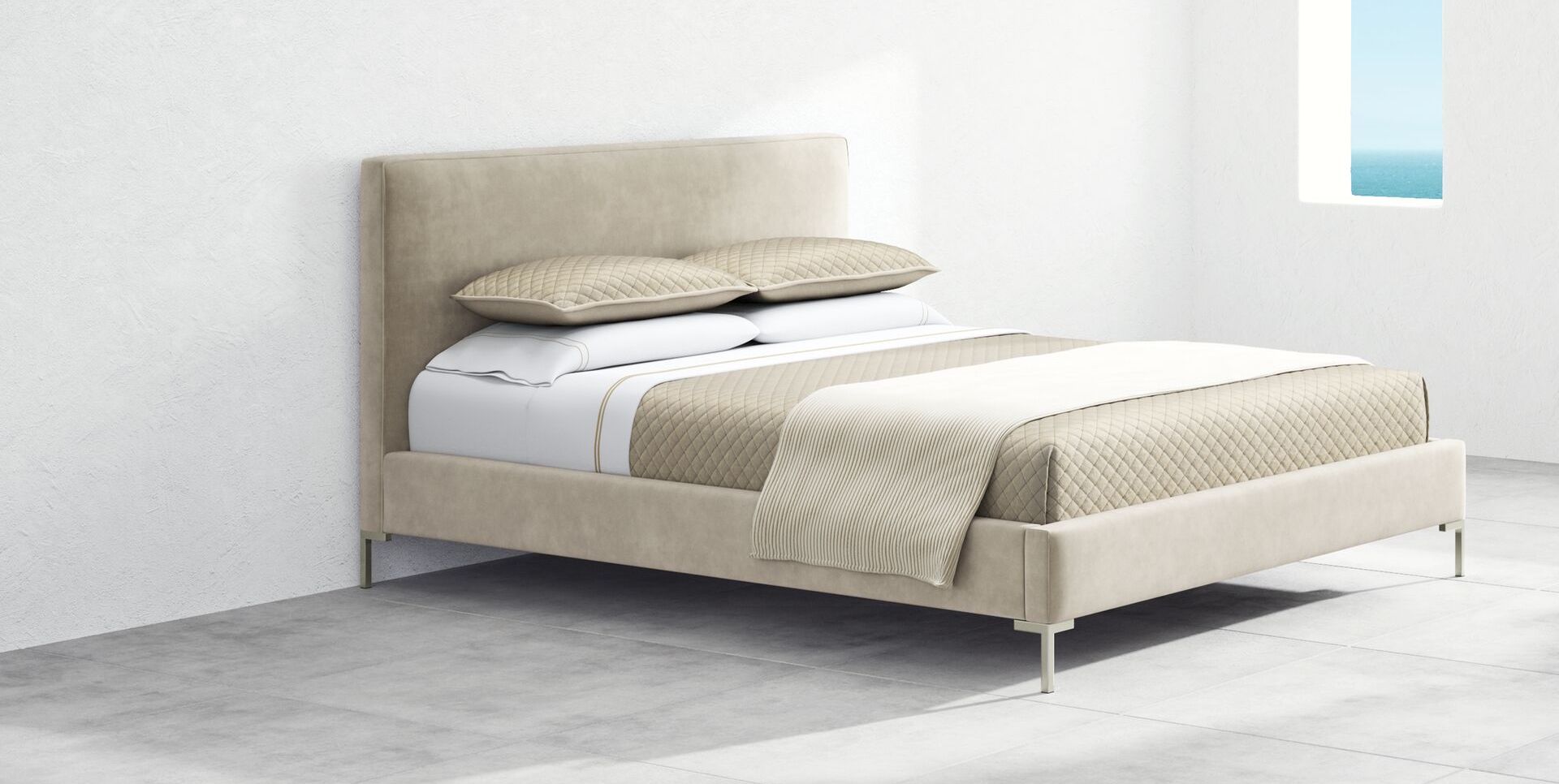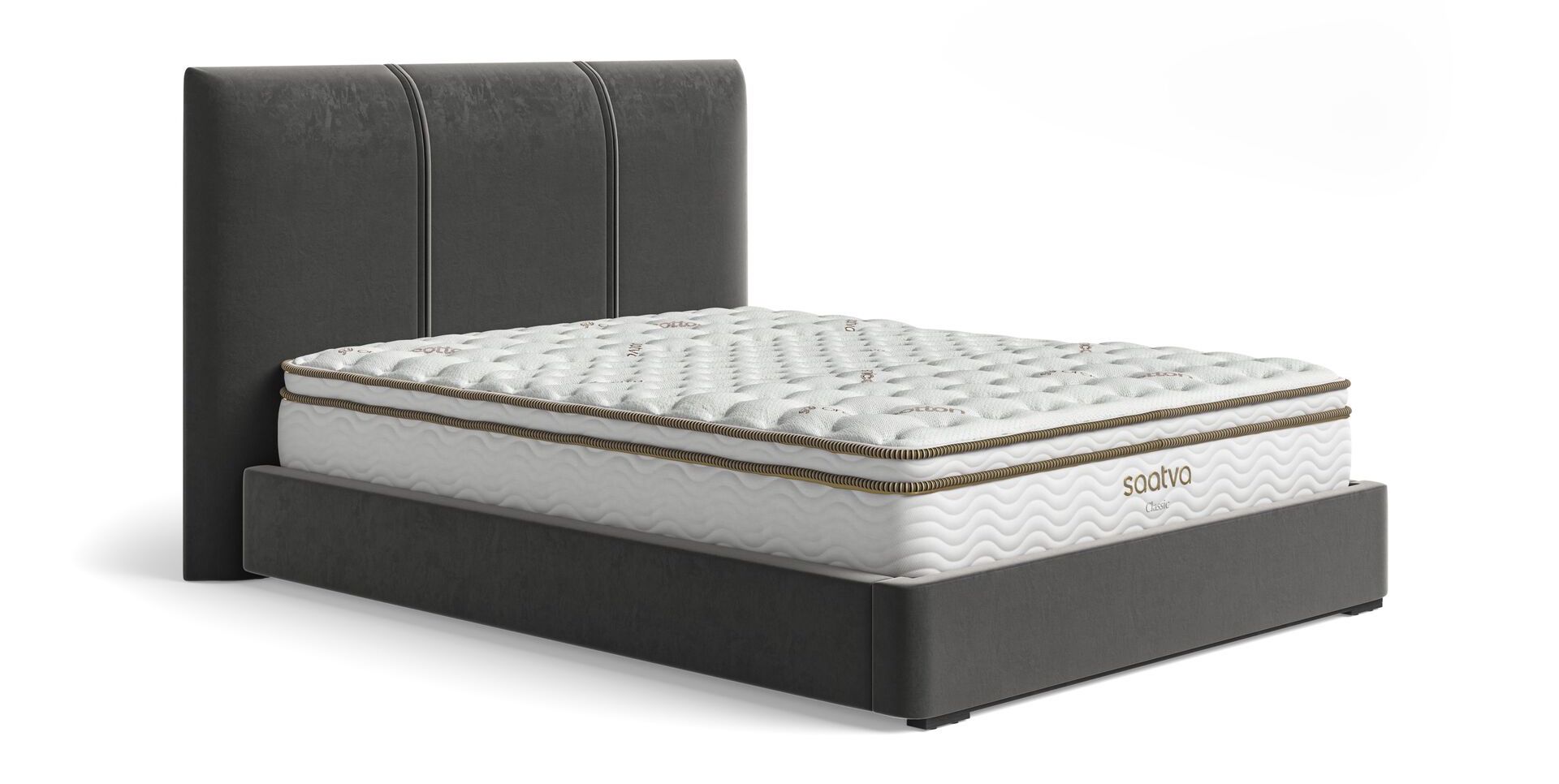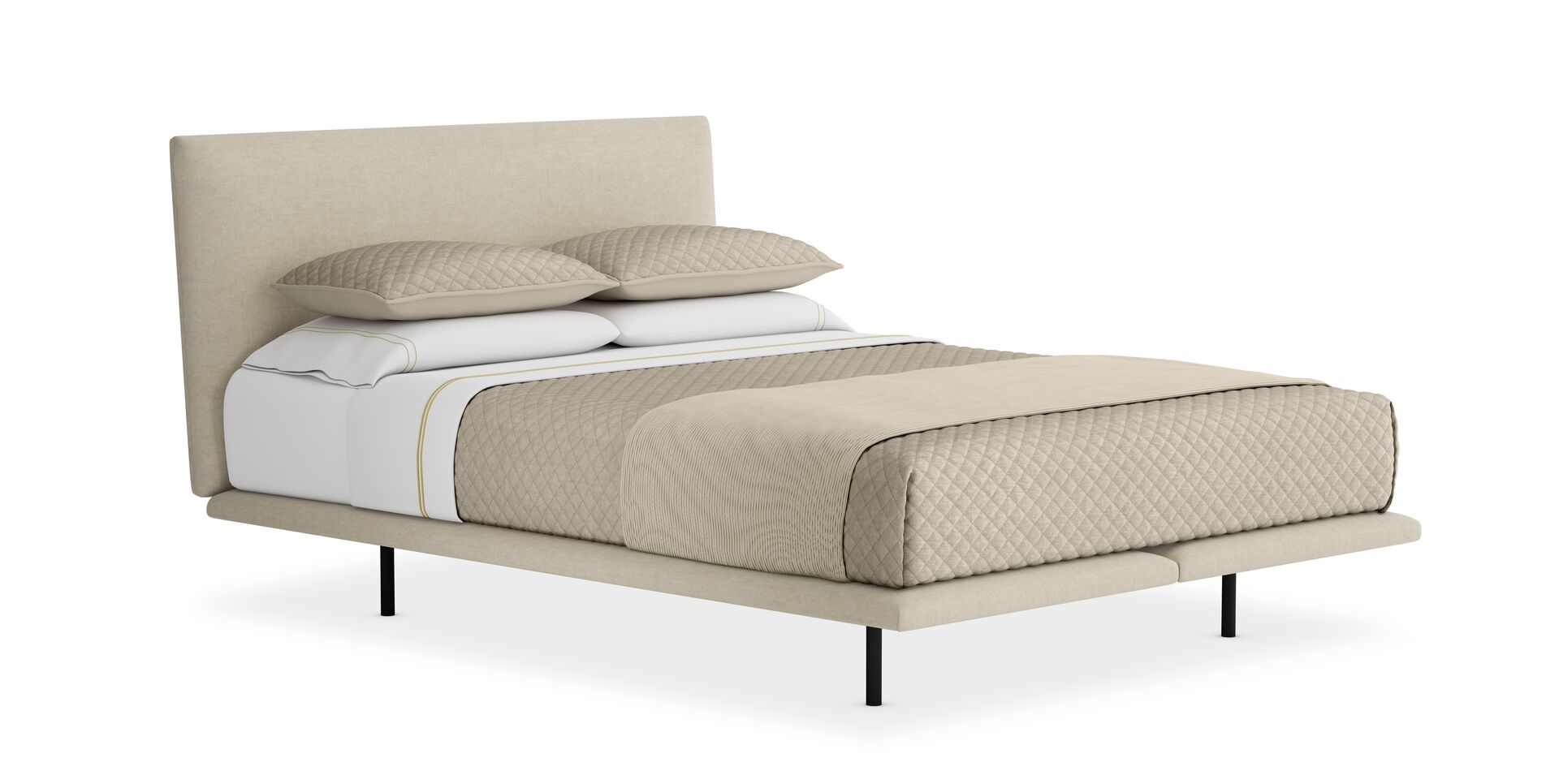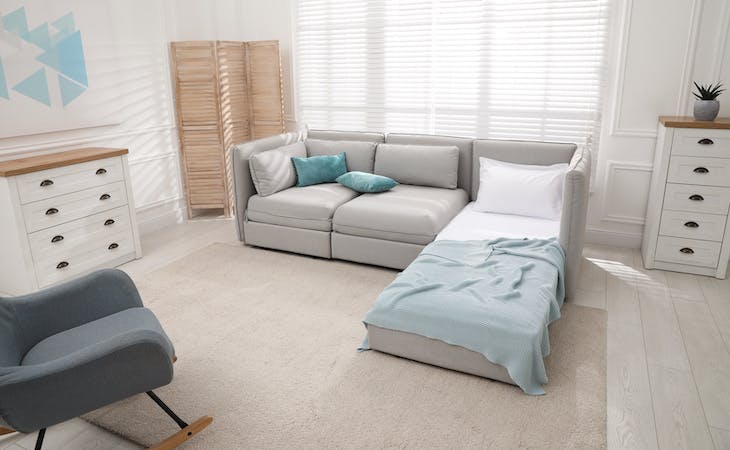You probably already know you should replace your mattress every seven to 10 years on average. But did you know your trusty bed frame doesn’t last forever either? It’s important to remember that a bed frame isn’t just a stylish addition to your bedroom—its main function is to properly support your mattress and give you the best sleep possible.
Therefore, sleeping on a bed that’s past its prime will make achieving a good night’s sleep much more difficult. So, how long does a bed frame last—and how do you know when it’s time to replace yours? Keep reading to find out.
How often to replace a bed frame
The lifespan of your bed frame depends on several factors. These include the type and quality of the materials and the construction as a whole as well as the kind of daily wear and tear it receives (five little monkeys jumping on your bed, anyone?).
Typically, wooden bed frames with slats last seven to 10 years if properly maintained, while metal bed frames may last 15 years or longer.
Generally, when your bed frame—meaning, the structure that supports the mattress and, if you use one, the box spring or foundation—starts creaking, splintering, or sagging, it’s time to replace it. Without adequate support, your mattress won’t perform as well or last as long and the quality of your sleep will suffer as well.
Signs it’s time to replace your bed frame
If you’re not sure, here are the top signs that’ll tell you it’s time for a bed frame to go.
Creaking
A creaking bed isn’t just an annoyance that might or might not interfere with your sleep. If you hear any creaking, that’s usually the first sign that your bed frame isn’t at its prime anymore and you need to start thinking about getting a new one.
Mattress sinking in
If it feels like you’re sinking when you’re lying down, or if your mattress looks like it’s caving in, it might be that your bed frame doesn’t support it properly anymore. Of course, it might be that the problem lies with your mattress.
But if you’re fairly sure your mattress isn’t at fault, then you might have a problem with your bed frame. It might be that the slats got bent or even broken over time. Whatever the case may be, it means that neither you nor your mattress is getting adequate support anymore.
Wood is damaged
If your wooden bed frame is damaged in any place, especially if there are cracks or splits in the slats, then you need to get a replacement as soon as possible.
One broken slat might not seem like a big deal, but the problem will only get worse if you leave it and it will impact the performance and the lifespan of your mattress and the quality of your sleep.
In fact, you should make it a habit to regularly check the wooden slats underneath the mattress to make sure everything is OK there.
Hardware is damaged
Maybe the wood is fine but your bed frame has other hardware problems, such as loose screws that can’t be tightened. It’s expected that over time these fixtures may become loose, twisted, and generally less reliable. If that happens, it might be time to start looking for a new bed frame.
Doesn’t match the design of your bedroom
Maybe everything is fine and you don’t have a problem with your bed frame but you’ve changed your bedroom decor and your bedroom no longer matches your ever-evolving style. Well, guess what: That alone is a perfectly good reason to get a new bed frame.
We spend a lot of time in our bedroom and expect it to be the place where we can be at our most comfortable and relaxed. If the cognitive dissonance of keeping your rustic bed frame in your newly sleek and ultra-modern bedroom haunts you in your sleep, then do yourself a favor and get a new bed frame.
Poor sleep
Perhaps there are no obvious issues with the bed frame that you can identify easily, but for some reason, your sleep quality has deteriorated. If your mattress is fine, an old or defective bed frame might be the culprit.
Maybe your old bed frame isn’t able to properly support your new mattress. If you’re constantly waking up tired or have trouble falling asleep despite a comfortable mattress, then getting a new bed frame might solve the issue.
How to extend the life of your bed frame
While nothing lasts forever, there are some easy ways to extend the life of your bed frame.
Clean it properly
Include bed frame cleaning in your weekly bedroom cleaning routine. Make sure to regularly dust and clean all parts of your bed frame. And while you’re at it…
Inspect it regularly
Make it a habit to inspect all parts of the bed frame regularly to make sure it’s not damaged and everything is functioning properly.
Tighten components
Check the hardware regularly and tighten any loose screws as soon as possible.
Rotate and/or flip your mattress
Regularly rotate or flip your mattress (depending on the manufacturer’s instructions) to help distribute wear more evenly. Doing this every few months can help you extend both the lifespan of your mattress and your bed frame.
Adhere to weight limits
Check the manufacturer’s weight limit before purchasing your bed frame and adhere to it. Of course, avoid overloading the bed frame with excessive weight.
That includes not piling your packed boxes onto your bed before an upcoming move as well as not letting any number of monkeys jump on your bed—not only because they may fall and bump their heads as a children’s nursery rhyme famously warns us, but also because it may irreparably damage the structure.
FAQs
How long do bed frames typically last?
A wooden bed frame usually lasts seven to 10 years, while a metal one may last 15 years or a bit longer, depending on factors such as the type and quality of the material and the daily wear and tear.
How long will a wooden bed frame last?
A wooden bed frame will typically last seven to 10 years.
Is it worth it to replace bed slats?
Slats are usually the first thing to go on a wooden bed frame. If the bed frame is otherwise in good order and is fairly new, then you may try and replace one broken slat. However, if the bed frame is older and has other issues (hardware problems, bent slats) then replacing this one slat won’t save it.
How do I know if I need a new bed frame?
If your bed frame is creaking, if the wood or the hardware is damaged, or if you’re generally not getting quality sleep anymore, then it’s time to replace it. On average, wooden bed frames need to be replaced every seven to 10 years and metal ones every 15 years or so.
Find the right bed frame for you at Saatva
If you’ve decided that it’s time to get a new bed frame, then check out our high-quality selection of bed frames. We offer bed frames to suit every sleep style, from minimalist platform beds to more ornate and stately bed frames, all of which are upholstered in beautiful materials like velvet, linen, and leather.










